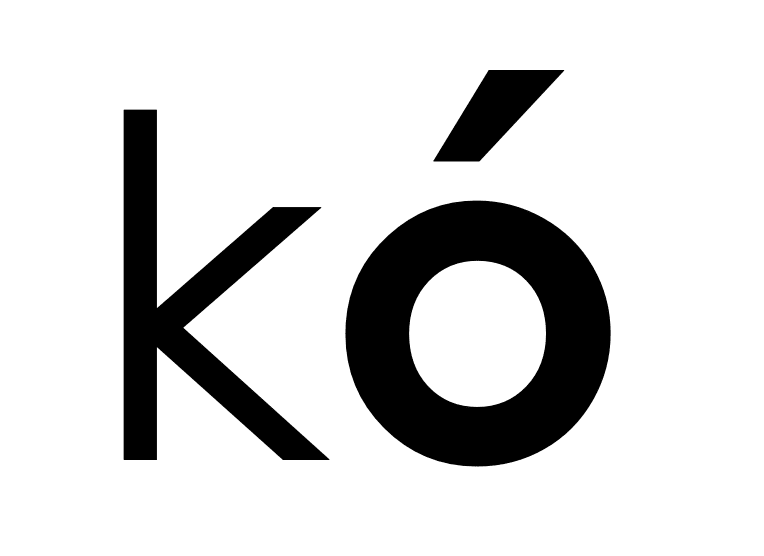Frieze Masters London: Spotlight: Twins Seven-Seven
kó is pleased to present a solo presentation of Twins Seven-Seven at Frieze Masters London. This presentation is featured in the Spotlight, a section dedicated to solo presentations by international twentieth century artists.
Twins Seven-Seven was a pioneering Nigerian artist who gained prominence in the 1960s through the Mbari Mbayo workshops in Osogbo, Nigeria. A central figure of the Osogbo Art School, he developed a unique modernist style rooted in Yoruba mythology and symbolism during Nigeria’s post-independence era. This presentation features a selection of Twins Seven-Seven’s early works from the 1960s-1980s, including his innovative “sculpture paintings” that combined drawing, painting, and relief on plywood, alongside works on paper and fabric.
The Osogbo Art School, as it came to be known, emerged in the early 1960s from experimental art workshops at a time when Osogbo, in southwestern Nigeria, was becoming a vibrant cultural center. These workshops welcomed participants without prior experience, encouraging them to create personal styles grounded in Yoruba cultural forms while engaging with modern realities. Initiated by expatriates Ulli and Georgina Beier and Nigerian playwright Duro Ladipo, the workshops provided a group of young artists space, mentorship, and materials to explore their individual visions. From this setting arose a generation of artists who developed distinct artistic styles while retaining a cohesive visual language.
Twins Seven-Seven worked across a wide range of media, including pen and ink drawings, etchings, painting, and wood panels. His surfaces are densely patterned, with intricate lines and repeated motifs. He portrays human figures, animals, spirits, and hybrid beings drawn from Yoruba cosmology and his imagination. Symbols such as serpents, birds, masquerades, and ghostly presences are layered into complex, narrative-like structures. In his “sculpture paintings”, he raised the foreground to create a low relief, giving his images a three-dimensional presence. He described his practice as “contemporary Yoruba traditional art”, focusing on the interplay of the material and spiritual worlds and the balance between tradition and modern life.
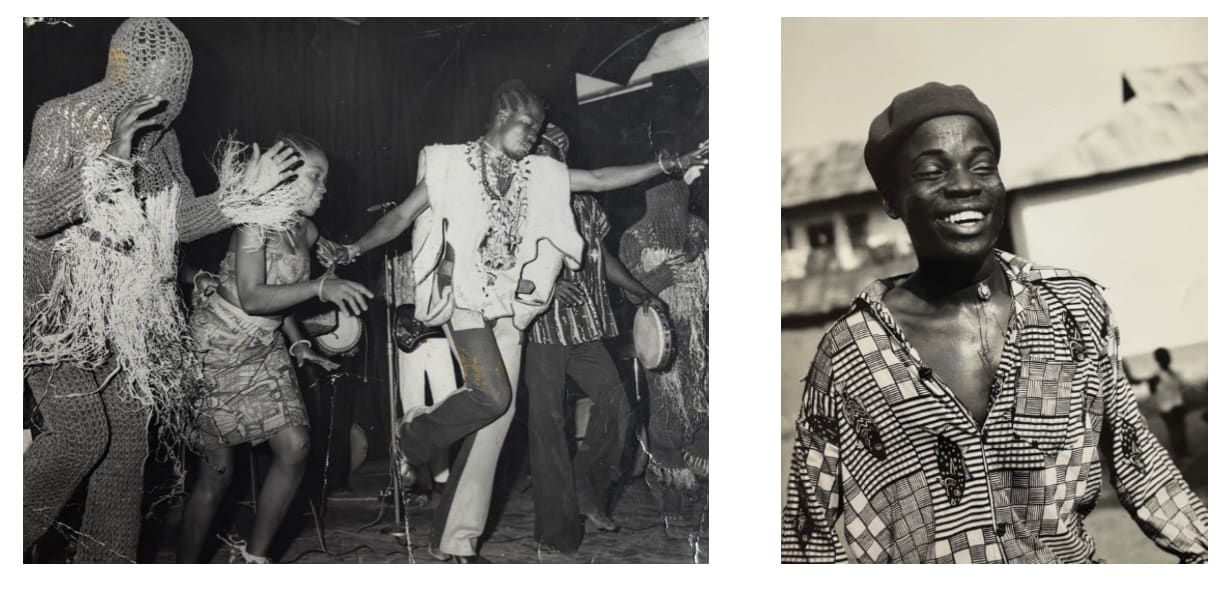
Born Taiwo Olaniyi Oyewale-Toyeje Oyelale Osuntoki in 1944 in Ogidi, Nigeria, he was the only surviving child of seven sets of twins, all of whom died in infancy. His survival marked him as an abiku child—a child “born to die,” believed to be one of a tribe of spirit children. His unusual lineage gave rise to the name “Twins Seven-Seven,” or “Ibeji Meje-Meje” in Yoruba, which he adopted as a personal identity and his artistic name. As a teenager, Twins briefly attended a teacher-training college before choosing a life on the road, first joining a traveling theatre troupe and then dancing with a medicine show that toured villages selling a so-called “Superman Tonic”. It was while traveling with this group that he first arrived in Osogbo in 1962. Twins Seven-Seven first encountered Ulli and Georgina Beier in 1963 when he gatecrashed a party at the Mbari Mbayo Club in Osogbo. Ulli Beier, a German professor and writer who taught at the University of Ibadan’s Department of Extramural Studies, and Georgina (then Georgina Betts), a British artist, were instrumental in creating Mbari Mbayo as an experimental cultural space. So struck was Ulli Beier by his charisma that he offered to top the wages Twins Seven-Seven had been earning on the road, assuring him that a place could be found for his talents in Osogbo.
In August 1964, Georgina Beier organised the Third Experimental Art School in Osogbo. Anyone curious to try art could join, and the open invitation drew in many of the young people who would become the pioneers of the Osogbo Art Movement, including Twins Seven-Seven, Jimoh Buraimoh, Muraina Oyelami, Rufus Ogundele, Adebisi Fabunmi, and Jacob Afolabi. Twins Seven-Seven, twenty years old and without any prior artistic training, wandered into the workshop with little else to do. During the workshop, Ulli Beier singled out Twins as the most remarkable, whose “bizarre and playful imagination” he compared to Nigerian novelist Amos Tutuola. After the five-day workshop, Georgina selected a small group of participants to continue working together as full-time studio artists. Supported with small stipends, materials, and mentoring, they developed their own styles and techniques over the next two years, from 1964 until December 1966, when the Beiers left Nigeria. During this time, the artists worked in studios at the Osogbo Museum and at the Beiers’ residence, creating an environment that fostered experimentation and collaboration.
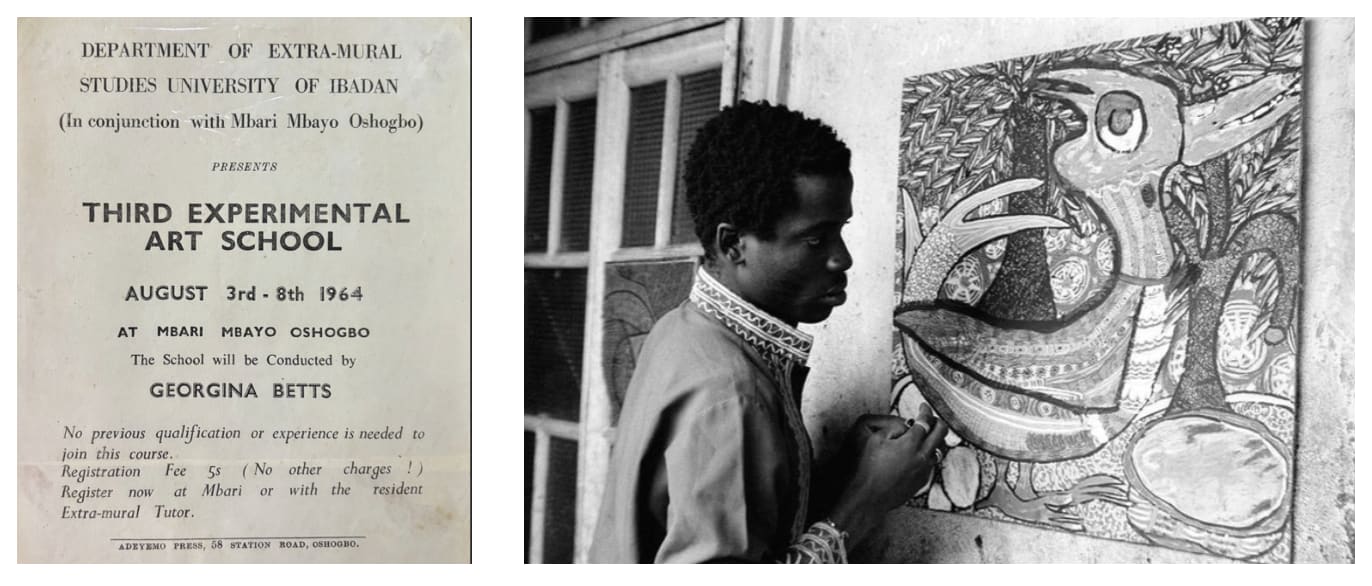
His first solo exhibition was held in March 1965 at Mbari Mbayo in Osogbo, on the occasion of the third anniversary of Mbari Mbayo. Soon after, his work began to circulate internationally. He exhibited at the Neue Münchener Galerie, Munich (1965); National Museum of Ethnography, Prague (1965), Institute of Contemporary Arts, London (1967); University of Sussex (1967); Otis Art Institute, Los Angeles (1969); Camden Arts Centre, London (1969), and the Commonwealth Institute (1970).
From the 1970s onward, Twins Seven-Seven’s work was steadily presented by leading museums across the world, marking him as one of the most widely exhibited Nigerian artist of his generation. He exhibited in major European institutions such as the Musée de l’Homme, Paris (1970), the Museum für Völkerkunde, Vienna (1971), and the Staatliche Kunsthalle, Berlin (1979), as well as at the Second Indian Triennial in New Delhi (1971). During this period he also established a strong presence in the United States, exhibiting at the Studio Museum in Harlem (1970), Union Carbide Gallery, New York (1972), the Field Museum of Natural History, Chicago (1974), the National Gallery of African Art, Washington, D.C. (1974), the Crocker Art Gallery, Sacramento (1974), the Carnegie Institute, Pittsburgh (1976), and Howard University (1977). He participated in artist residencies in the United States including Merced College in California (1972) and Haystack Mountain School of Crafts in Maine (1974).
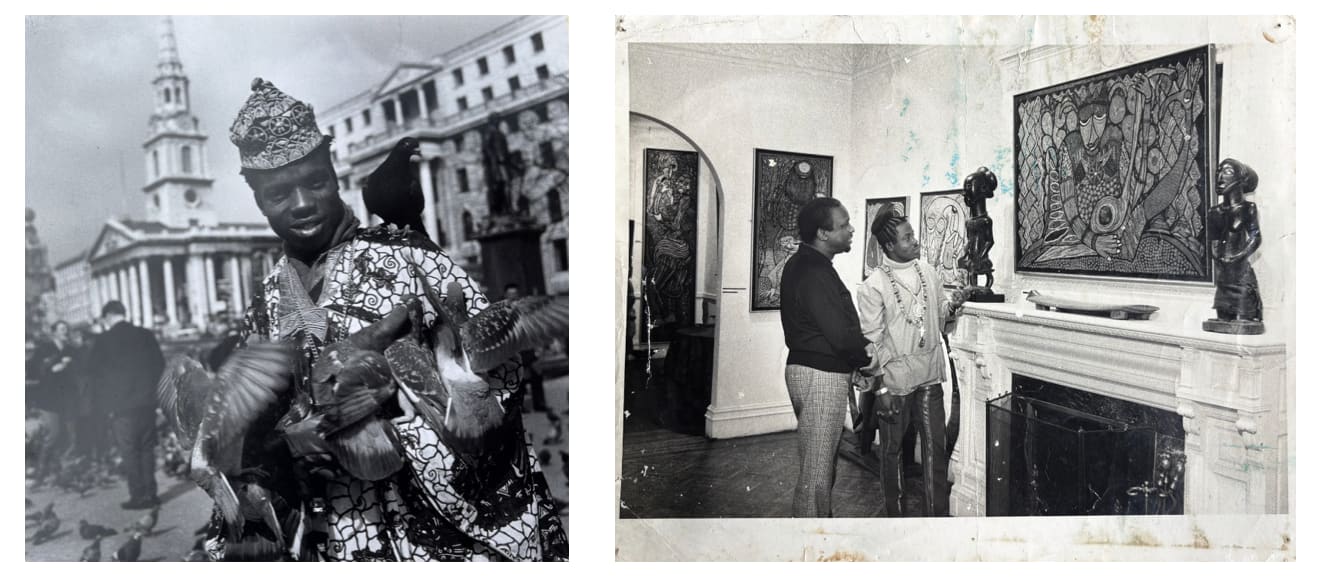
His exuberant personality extended into his personal life: known for his flamboyant fashion, he was a dancer and celebrated musician with songs that topped the radio charts. He was married to fourteen wives simultaneously, among them the artist Nike Davies-Okundaye, who built her own celebrated career. Twins’ home in Osogbo became what he called a “cultural embassy” where he regularly welcomed visiting celebrities and foreign dignitaries.Over the following decades, his work has since been included in landmark exhibitions such as Magiciens de la Terre (Centre Pompidou, 1989), The Short Century (Villa Stuck, 2005), the Venice Biennale (2024), Black Orpheus: Jacob Lawrence and the Mbari Club (Chrysler Museum of Art, New Orleans Museum of Art, and Toledo Museum of Art, 2024) and, most recently, Nigerian Modernism (Tate Modern, 2025). Today, Twins Seven-Seven is remembered as one of the most original figures of modern African art, a self-taught visionary whose vivid imagination and energy carried Yoruba traditions into a modern global context.
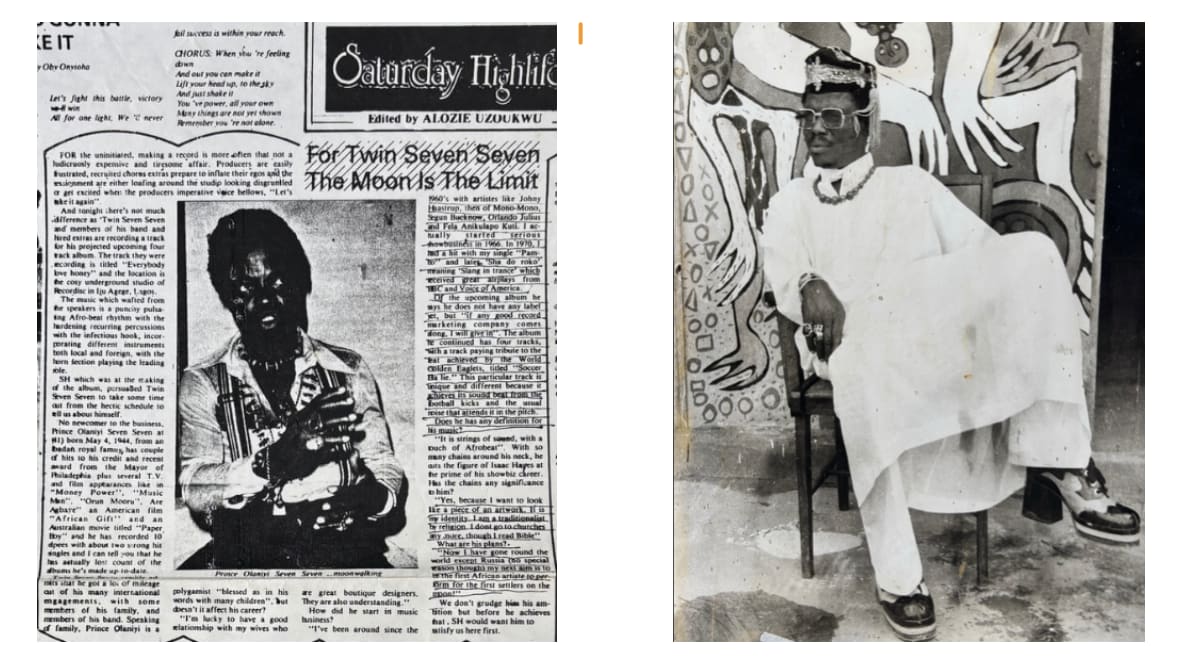
Images and archival materials courtesy of the Center for Black Culture and International Understanding (CBCIU), Osogbo Nigeria.
-
 Twins Seven Seven, King of the rainbow godess, 1978
Twins Seven Seven, King of the rainbow godess, 1978 -
 Twins Seven Seven, Dream of a tired hunter in the bush of host, 1978
Twins Seven Seven, Dream of a tired hunter in the bush of host, 1978 -
 Twins Seven Seven, SANGO (god of thunder), 1976
Twins Seven Seven, SANGO (god of thunder), 1976 -
 Twins Seven Seven, The Devil's Dog in the Contorted City, c. 1972-74
Twins Seven Seven, The Devil's Dog in the Contorted City, c. 1972-74
-
 Twins Seven Seven, Evan & Juliet Highet in a Collective Mood, c. 1972-74
Twins Seven Seven, Evan & Juliet Highet in a Collective Mood, c. 1972-74 -
 Twins Seven Seven, African Buffalo & Tortoise Race, c. 1972-74
Twins Seven Seven, African Buffalo & Tortoise Race, c. 1972-74 -
 Twins Seven Seven, Abiku Protector, 1968
Twins Seven Seven, Abiku Protector, 1968 -
 Twins Seven Seven, Arugba (the osun calabash carrier), 1978
Twins Seven Seven, Arugba (the osun calabash carrier), 1978
-
 Twins Seven Seven, Àpáàrá, 1972
Twins Seven Seven, Àpáàrá, 1972 -
 Twins Seven Seven, Irin Ajo Orunmila, 1971
Twins Seven Seven, Irin Ajo Orunmila, 1971 -
 Twins Seven Seven, Ebo, 1971
Twins Seven Seven, Ebo, 1971 -
 Twins Seven Seven, Èéwo, 1972
Twins Seven Seven, Èéwo, 1972
-
 Twins Seven Seven, Laro, founder of Osogbo, c. 1970
Twins Seven Seven, Laro, founder of Osogbo, c. 1970 -
 Twins Seven Seven, The mist of mankind in the spiritual realm, 1989
Twins Seven Seven, The mist of mankind in the spiritual realm, 1989 -
 Twins Seven Seven, My vision of Olokun, 1972
Twins Seven Seven, My vision of Olokun, 1972 -
 Twins Seven Seven, Obataala (big god), 1971
Twins Seven Seven, Obataala (big god), 1971
